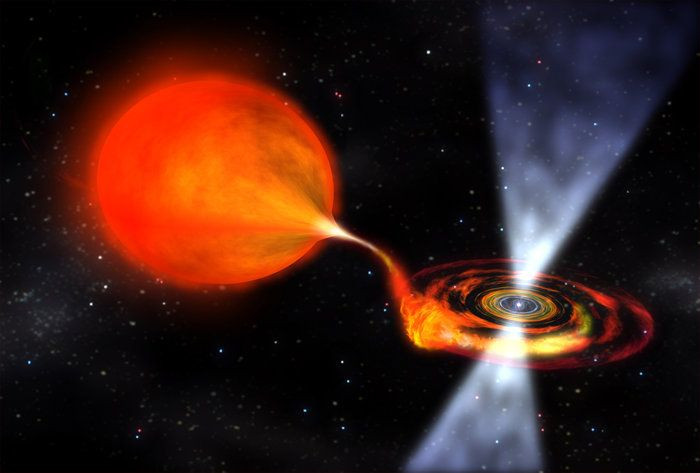Zombie Neutron Star Brought Back To Life By Neighboring Red Giant

Astronomers have discovered a rare cosmic event – a dead star brought to life. The phenomenon was observed by the ESA’s (European Space Agency) Integral space observatory, which saw a red giant star revive its dead companion star with a flash of X-rays.
The X-ray flare was first spotted in August 2017. At that time, all that was known about the X-ray flare was that it came from an unknown source from the heart of our very own Milky Way galaxy. However, Integral’s observations revealed that a slow-spinning neutron star, with an unusually strong magnetic field has likely just begun feeding on material from a neighboring red giant star.
“Integral caught a unique moment in the birth of a rare binary system,” Enrico Bozzo from University of Geneva and lead author of the new study, said in a statement. “The red giant released a sufficiently dense slow wind to feed its neutron star companion, giving rise to high-energy emission from the dead stellar core for the first time.”
Massive stars, which either have the same mass or up to eight times the mass of our sun, evolve into red giant stars toward the end of their lives. On the other hand, neutron stars are created when stars that are even larger – about 25 to 30 times bigger than the sun – burn through their fuel and explode in a supernova. These neutron stars are considered to be some of the densest known cosmic objects, packing the mass of about one and a half suns into a 10 km-wide orb.
A “symbiotic X-ray binary” – a star system made up of a red giant star and a neutron star – is extremely rare. So far, only 10 such systems are known to us. In this particular case, astronomers discovered that the neutron star spins very slowly when compared to others of its kind. It completed a spin every two hours, while other neutron stars have been known to spin several times in just a second.

The neutron star’s magnetic field was also found to be unusually strong. Researchers believe this could indicate that that the neutron star is younger in comparison to its red giant star companion.
“These objects are puzzling,” Bozzo added. “It might be that either the neutron star magnetic field does not decay substantially with time after all, or the neutron star actually formed later in the history of the binary system. That would mean it collapsed from a white dwarf into a neutron star as a result of feeding off the red giant over a long time, rather than becoming a neutron star as a result of a more traditional supernova explosion of a short-lived massive star.”
“We haven’t seen this object before in the past 15 years of our observations with Integral, so we believe we saw the X-rays turning on for the first time,” said Erik Kuulkers, ESA’s Integral project scientist. “We’ll continue to watch how it behaves in case it is just a long ‘burp’ of winds, but so far we haven’t seen any significant changes.”
The findings of the new research were published in the journal Astronomy & Astrophysics.
© Copyright IBTimes 2024. All rights reserved.





















